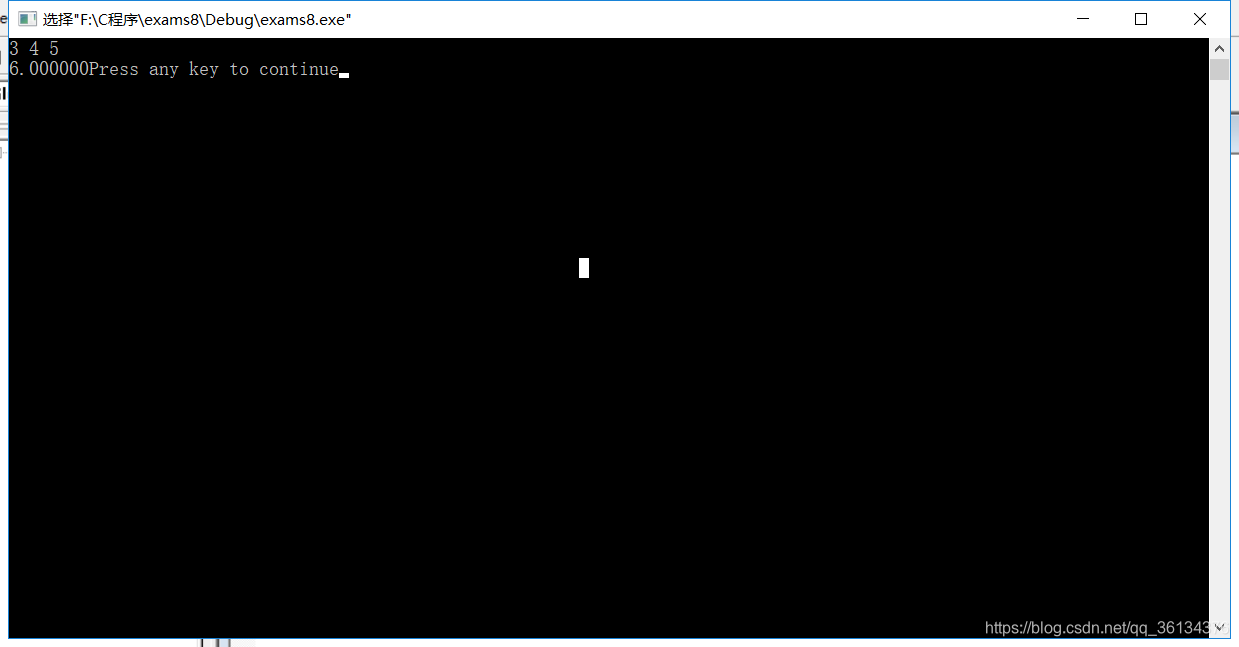C语言-求三角形面积
本文共 301 字,大约阅读时间需要 1 分钟。
一、代码
//三角形面积:(海伦公式)(p=(a+b+c)/2)//S=sqrt[p(p-a)(p-b)(p-c)]#include#include void main(){ double a,b,c; double p; double s; scanf("%lf%lf%lf",&a,&b,&c); if((a+b>c)&&(a+c>b)&&(b+c>a)){ p=(a+b+c)/2; s=sqrt(p*(p-a)*(p-b)*(p-c)); printf("%lf",s); } else printf("无法构成三角形"); }
二、结果

转载地址:http://xbch.baihongyu.com/
你可能感兴趣的文章
mysql主从复制及故障修复
查看>>
MySQL主从复制的原理和实践操作
查看>>
webpack loader配置全流程详解
查看>>
mysql主从复制,读写分离,半同步复制实现
查看>>
MySQL主从失败 错误Got fatal error 1236解决方法
查看>>
MySQL主从架构与读写分离实战
查看>>
MySQL主从篇:死磕主从复制中数据同步原理与优化
查看>>
mysql主从配置
查看>>
MySQL之2003-Can‘t connect to MySQL server on ‘localhost‘(10038)的解决办法
查看>>
MySQL之CRUD
查看>>
MySQL之DML
查看>>
Mysql之IN 和 Exists 用法
查看>>
MYSQL之REPLACE INTO和INSERT … ON DUPLICATE KEY UPDATE用法
查看>>
MySQL之SQL语句优化步骤
查看>>
MYSQL之union和order by分析([Err] 1221 - Incorrect usage of UNION and ORDER BY)
查看>>
Mysql之主从复制
查看>>
MySQL之函数
查看>>
mysql之分组查询GROUP BY,HAVING
查看>>
mysql之分页查询
查看>>
Mysql之备份与恢复
查看>>